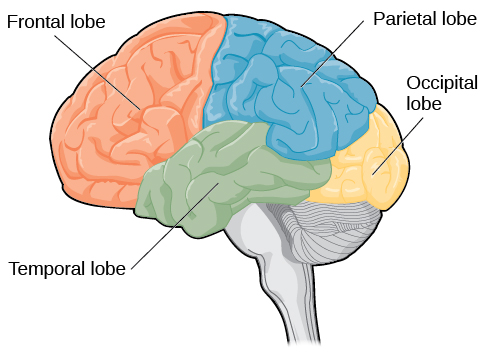<< Hide Menu
Dalia Savy
Sadiyya Holsey
Haseung Jun
Dalia Savy
Sadiyya Holsey
Haseung Jun
We keep learning about how our memory works, but what part of the brain 🧠 is responsible for all of this? Let's find out.
Hippocampus
The hippocampus is part of the limbic system and in the temporal lobe. The hippocampus is responsible for the formation of memory and processes explicit memories for storage. All memories start at the hippocampus; you can think of it as some sort of "save 💾 button."
After the information gets here, it migrates for storage elsewhere. Some specific facts about the hippocampus:
- If there is damage to the left side, you will have trouble remembering verbal information 👄
- If there is damage to the right side, you will have trouble recalling visual information 👀
- Every region has a different function. For example, there is one region that puts names to faces and another region that engages with mnemonic devices 🌈
- Sleep helps your memory consolidation and ensures it is processed.- During deep sleep (NREM-3), memories are processed. Interestingly enough, the brain replays the day's experiences and brings them to your LTM!
Frontal Lobes
Information is sent to the frontal lobes for working memory. Your working memory is similar to STM, but it is the processing of incoming auditory and visual information. It helps make sense of new information and link it to the old information in your long-term memory.

Image Courtesy of Lumen Learning.
Fun Fact—You can damage your frontal lobe and hippocampus but still have the ability to lay down implicit memories, like tying your shoe 👞or riding a bike. 🚴
Thalamus
The thalamus is believed to have some role in encoding sensory memory into short-term memory. This short term memory is located mostly in the pre-frontal cortex and temporal lobes.
Cerebellum
The cerebellum stores your implicit memories that are usually formed by classical conditioning and conditioned reflexes. Without a cerebellum, you wouldn't be able to learn from classical conditioning 🐶
Basal Ganglia
You probably rarely hear of this, but it helps form our procedural memories, which is the "how to" type of implicit memory. We really have no idea how we remember things like tying our shoes 👞, but we can thank it all to our basal ganglia.
Amygdala
The amygdala has a lot to do with your emotion (i.e. fear and aggression 😨), but where does it come into play with memory?
Emotions actually affect how well we process a memory. Depending on our emotions, the brain could be fueled more by our hormones and the memory may stick with us longer.
You know that you always remember really exciting moments and really stressful moments, right? These always stick with us because of how strong of an emotion we were feeling at the time. These emotions release stress hormones and provoke the amygdala.
Think of them saying, "Something important is happening! We have to remember this!!" and other parts of the brain will be signaled to aid in the memory process.
No wonder why we remember big moments, like when we lost our loved ones or our first kiss—it just always sticks with us.
Long-term Potentiation
LTP is one of the newer terms in this key topic and it is the strengthening of synapses based on recent activities, producing long-lasting communication between neurons.
For example, if you practice coding using the programming language Python every day and rarely practice coding in Java, you are more likely to remember the Python and forget the Java.
Scientists know that LTP is the physical foundation for memory because:
- Drugs 💊 that block long term potentiation interfere with and slow down learning.
- If an experiment is done to block LTP, there is a loss of memory and learning 📖 shown.
Neurotransmitters
Neurotransmitters are chemical messengers released by neurons that transmit messages between neurons. The chemical messages are interpreted and received in the neuron’s synapses.
Glutamate and acetylcholine are two neurotransmitters related to memory.
Quick Rundown
- Hippocampus --> explicit memories
- Frontal Lobes --> working memory
- thalamus --> short term memory
- Cerebellum --> implicit memories
- Basal Ganglia --> implicit procedural memories
- Amygdala --> emotion—the stronger the emotion, the more likely we will remember something.

© 2024 Fiveable Inc. All rights reserved.